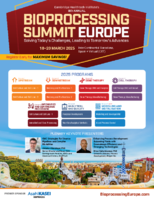Cambridge Healthtech Instituteの第8回年次
Cell Culture and Cell Line Engineering - Part 2
細胞培養・細胞株エンジニアリング - パート2
New Strategies for Enhanced Quality and Emerging Modalities
品質向上と新興モダリティの新戦略
2025年3月19日 - 20日 CET(中央ヨーロッパ標準時)
3月19日(水)
10:30Registration Open
PLENARY KEYNOTE: ADAPTING TO GLOBAL DEMANDS AND EVOLVING PIPELINES
プレナリー基調講演:世界的な需要への適応と進化するパイプライン
CMC Strategies for Diverse Pipelines and Complex Modalities
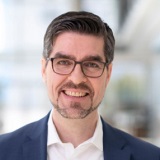 Christian Hunzinger, PhD, Senior Director and Head, CMC Development Proteins, ADCs and Chemical Entities, BioNTech
Christian Hunzinger, PhD, Senior Director and Head, CMC Development Proteins, ADCs and Chemical Entities, BioNTech
Biopharmaceutical treatment paradigms are shifting from monotherapy towards multi-target approaches with complex multimodal entities. This complexity also translates into increasingly complex CMC development and manufacturing strategies. The talk will provide a general overview on recent developments, challenges, and opportunities, along with examples from various stages of the CMC development lifecycle.
Enhancing Process Development: Balancing Yields with Downstream Efficiency and Emerging Technologies
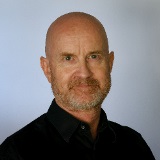 Oliver Kaltenbrunner, PhD, Scientific Director, Process Development, Amgen Inc.
Oliver Kaltenbrunner, PhD, Scientific Director, Process Development, Amgen Inc.
Explore the evolving landscape of process development, emphasising the critical balance between maximising yields and optimising downstream processing. This presentation will delve into the impact of upstream processes on primary recovery, integrating cutting-edge technologies like Process Analytical Technology (PAT), advanced modelling, and artificial intelligence. Supported by real-world examples, we'll examine how these innovations are reshaping process efficiency and performance in the industry.
12:20Session Break
12:30Sponsored Presentation (Opportunity Available)
13:00Networking Lunch in the Exhibit Hall with Poster Viewing

EMERGING TECHNOLOGIES FOR CLD
CLDの新興技術
Finding the Right Clone: CLD Platform Optimisation
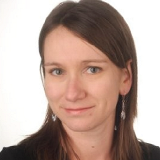 Katarzyna Sobkowiak, PhD, Scientist, Biotech Development Center, Merck KGaA
Katarzyna Sobkowiak, PhD, Scientist, Biotech Development Center, Merck KGaA
In recent years, more advanced molecule formats, like bispecific asymmetric monoclonal antibodies, have become more prevalent in biopharmaceutic industry. They pose new challenges in cell line development projects. It requires the development of new screening methods to increase the chances of generating clones with good productivity and quality attributes. We have developed new approaches in early pools and clones’ screening to increase the chance of obtaining clones with desired attributes.
Genomic Barcoding for Clonal Diversity Monitoring in Targeted-Integration CHO Cell Lines
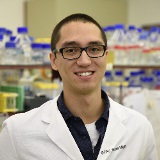 Niels Bauer, Researcher, Genomic Medicine, Roche
Niels Bauer, Researcher, Genomic Medicine, Roche
To understand the source of interclonal heterogeneity during targeted integration (TI)-based CHO antibody producer cell-line development, we developed a cellular genomic barcoding strategy. This technology provided novel insights about clone diversity during stable cell-line selection on pool level, enabled an imaging-independent monoclonality assessment after single-cell cloning, and eventually improved hit-picking of antibody producer clones by monitoring of cellular lineages during the cell-line development (CLD) process.
Gene Editing for the Purification of a Large Multiprotein Complex
 Arnaud Poterszman, PhD, Research Director, Integrated Structural Biology, IGBMC
Arnaud Poterszman, PhD, Research Director, Integrated Structural Biology, IGBMC
Macromolecular complexes are cornerstones of most, if not all, biological processes in cells. We will illustrate how the CRISPR/Cas9 editing technology can be used for gene tagging in order to introduce affinity tags and facilitate the purification of proteins/macromolecular assemblies expressed in physiological conditions. We will also discuss tagging proteins with fluorescent reporters in view of imaging and functional proteomics applications.

From Single-Cell Cloning to Selection of Top-Performing Cell Lines: A Turnkey Solution for Clonal Cell Line Generation and Screening in Advanced Therapeutics
CYTENA’s C.STATION automates cell line development (CLD), streamlining the process from single-cell cloning to identifying top-performing cell lines. This all-in-one solution integrates cutting-edge technologies for imaging, culture maintenance, and clonality assurance, ensuring full traceability and regulatory compliance. Supporting both adherent and suspension cultures, C.STATION accelerates stable cell line creation for monoclonal antibodies and gene-edited iPSCs. Unlock the future of CLD with C.STATION.
16:20Refreshment Break in the Exhibit Hall with Poster Viewing

Advances in the Pipeline for the Production and Characterisation of Therapeutic Proteins Using Cell-Free Synthesis
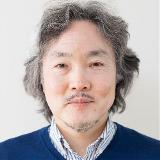 Takanori Kigawa, PhD, Senior Scientist, RIKEN Center for Biosystems Dynamics Research
Takanori Kigawa, PhD, Senior Scientist, RIKEN Center for Biosystems Dynamics Research
We have established and utilised a protein-production pipeline based on cell-free synthesis that can accelerate the production of therapeutic proteins, including cytokines, antibodies, and membrane proteins. Using this pipeline, microgram to milligram quantities of multiple proteins can be produced simultaneously using automated processes, greatly accelerating the production of therapeutic protein candidates for characterisation by analytical methods including NMR. This presentation will highlight the progress of the pipeline.
Tastes like Chicken, Because It Is: Insights from the Cultivated Meat Industry
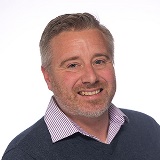 Kalle Johnson, Senior Director, Cell Culture Media, UPSIDE Foods
Kalle Johnson, Senior Director, Cell Culture Media, UPSIDE Foods
The combination of global population increase, expected to approach 10 billion by 2050, and rising affluence in developing regions poses a formidable challenge in meeting the predicted 2-fold demand for meat through conventional means. The burgeoning cultivated meat industry presents a promising solution to this sustainability conundrum.
The present work explores an overview of cultivated meat and the following topics:
- Measures to ensure food product safety of the cell lines, cell culture media, processes, and final product testing used to produce cultivated chicken
- Design specifications, sources, and characteristics of critical nutrients contained in media that impact the cost and mission of cultivated meat
- Bioprocessing at an immense scale compared to traditional biotherapeutics
Interactive Breakout Discussions are informal, moderated discussions, allowing participants to exchange ideas and experiences and develop future collaborations around a focused topic. Each discussion will be led by a facilitator who keeps the discussion on track and the group engaged. To get the most out of this format, please come prepared to share examples from your work, be a part of a collective, problem-solving session, and participate in active idea sharing. Please visit the Interactive Breakout Discussions page on the conference website for a complete listing of topics and descriptions.
Digital Bioprocessing and Industry 4.0: How Far Along Are We?
Economic and Sustainability Considerations for Hybrid Processes (Single Use/Stainless)
Stefan Junne, PhD, Associate Professor, Bioscience and Engineering, Aalborg University
- Definition and examples of hybrid processing
- Benefits for process flexibility and continuous operation
- Technical, logistical and regulatory burdens
- Sustainability considerations
- Will hybrid processing give a boost for single-use equipment beyond biopharma?
18:30Close of Day
3月20日(木)
08:00Registration and Morning Coffee
PROCESS MONITORING AND CONTROL
プロセスモニタリングと制御
To Model or Not to Model: When Are Models Really Useful?
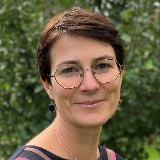 Bettina Knapp, PhD, Lab Head, Upstream Development, Boehringer Ingelheim
Bettina Knapp, PhD, Lab Head, Upstream Development, Boehringer Ingelheim
Cell culture development in biopharmaceuticals uses models to optimise processes and understand complex systems. Defining a model's purpose is crucial, as is starting with good data. Embracing model thinking across all disciplines enhances understanding and effective use of models. Despite challenges, effective modelling can lead to faster, better, and more sustainable processes.
Non-Invasive Methods for Monitoring Bioprocesses
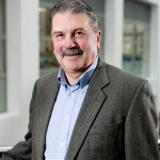 Michael Butler, PhD, Principal Investigator, Cell Technology, National Institute for Bioprocessing Research & Training (NIBRT)
Michael Butler, PhD, Principal Investigator, Cell Technology, National Institute for Bioprocessing Research & Training (NIBRT)
Bio-capacitance has become a standard online method to measure growth in cell-based biomanufacturing. The method offers, rapid continuous monitoring without manual sampling. However, there are noted deviations at the inflection point beyond exponential growth compared to standard staining methods such as trypan blue. This can be explained by different measurement criteria that can be exploited to gain a good understanding of the metabolic changes that arise during the bioprocess.
KEYNOTE PRESENTATION: Using the Oxygen Transfer Rate as a Basis for Scale-Up of Cell Culture
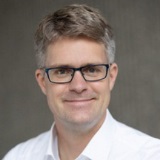 Jorgen B. Magnus, PhD, Professor & Chair, Biochemical Engineering, RWTH Aachen University
Jorgen B. Magnus, PhD, Professor & Chair, Biochemical Engineering, RWTH Aachen University
Using the Respiration Activity Monitoring System developed at the RWTH University of Aachen, the oxygen transfer rate can be measured very accurately in deep well plates, shake flasks, and stirred tank bioreactors. Thus, the state of the cell culture can be understood at different scales without the need to take samples. This information, in combination with calculations of volumetric power input and maximum energy dissipation, is used for scale-up.
 A scalable protein production technology to accelerate biotherapeutic development
A scalable protein production technology to accelerate biotherapeutic development
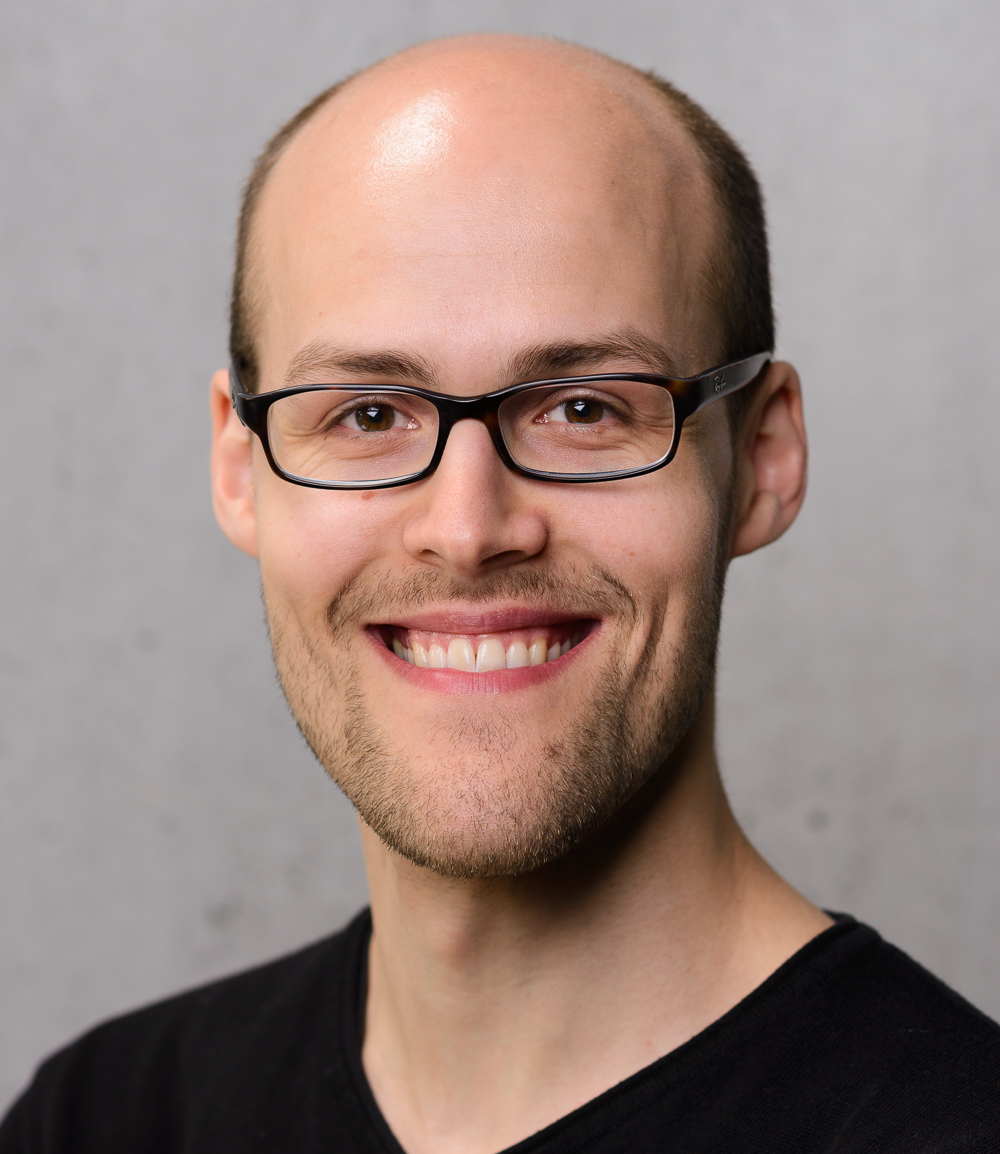 Hannes Juergens, Head of Platform Development, LenioBio
Hannes Juergens, Head of Platform Development, LenioBio
ALiCE® is a revolutionary cell‐free protein production platform transforming upstream bioprocessing for complex biotherapeutics. Overcoming traditional cell‐culture constraints, it efficiently produces diverse modalities-from fragments to full-size antibodies, including multispecifics, and difficult-to-express proteins-with rapid timelines and consistent quality. Through case studies and partner collaborations, we show how ALiCE® accelerates discovery and scale-up, redefining the pathway from science to clinical application. A bold alternative to cell culture, opening frontiers in biotherapeutics.
10:30Coffee Break in the Exhibit Hall with Poster Viewing

DIGITAL APPLICATIONS IN CELL CULTURE AND CLD
細胞培養・CLDにおけるデジタルアプリケーション
Accelerating Design of New Upstream Bioprocesses with Digital Twins: A Case Study on AAV Production
 Inês A. Isidro, PhD, Head of Biosystems and Data Science, iBET
Inês A. Isidro, PhD, Head of Biosystems and Data Science, iBET
Digital twins can significantly transform bioprocess design. We present a case study on AAV production in insect cells, where digital simulation was used to design a new fed-batch operation. This demonstrate how digital twins can be leveraged for new gene and cell therapy products, which often have limited accumulated data and serotype/donor-specific variability, to unlock faster and more efficient bioprocess development.
Computational Approach to Accelerate Culture Media Optimisation for New Modalities
 Zach Pang, PhD, Group Leader, Bioprocess Data Integration, A*STAR
Zach Pang, PhD, Group Leader, Bioprocess Data Integration, A*STAR
The current workflow involves experimental DOE to determine the optimal culture media formulation. A paradigm shift is underway in the optimisation of culture media, wherein a modelling approach can be employed to accelerate culture media optimisation. I will introduce a computational approach involving genome-scale metabolic modelling and model-guided DoE approach, and how this workflow can help the industry, particularly for new modalities, to accelerate culture media design and optimisation.
12:10Sponsored Presentation (Opportunity Available)
12:40Networking Lunch in the Exhibit Hall with Poster Viewing

PROBLEMS AND SOLUTIONS
問題とソリューション
Engineered CHO Cell Lines for Improved Bioprocess Development
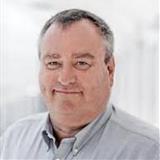 Bjørn Voldborg, MSc, Head, National Biologics Facility, DTU Bioengineering, Technical University of Denmark
Bjørn Voldborg, MSc, Head, National Biologics Facility, DTU Bioengineering, Technical University of Denmark
Using genome-scale cell-line engineering, we have generated a large collection of engineered CHO cell lines for the production of the next generations of biologics. The collection contains cell lines engineered for prolonged fed-batch productions, removal of lactate secretion, tailored and improved glycosylation, and removal of contaminating host cell proteins. Using these cell lines, we have demonstrated production of recombinant proteins with tailored glycans, lactate-free bioprocesses, and improved product quality.
Critical Quality Attributes of Single-Use Stirred Tank Bioreactors versus Planar Culture Systems
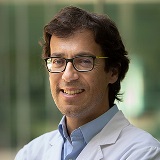 Joaquim Vives, PhD, Head of Production, Advanced Therapies, Banc de Sang i Teixits
Joaquim Vives, PhD, Head of Production, Advanced Therapies, Banc de Sang i Teixits
This presentation will focus on the development and validation of Good Manufacturing Practice-compliant 3D-culture methods using microcarriers and single-use stirred-tank bioreactors for expanding mesenchymal stromal cells (MSCs). Our results showed comparable yields and quality between 3D and 2D cultures, with high cell viability, consistent immunophenotype, and intact multipotency and immunopotency. These processes support scalable, clinical-grade MSC production for use in allogeneic advanced therapies.
Strategies for Developing Stable CHO Cell Lines for High-Yield mAb Production
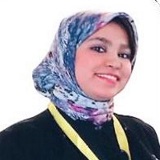 Hafsa Boulenouar, PhD, Postdoctoral Researcher, Medicine and Pharmacy, Mohammed V University of Rabat
Hafsa Boulenouar, PhD, Postdoctoral Researcher, Medicine and Pharmacy, Mohammed V University of Rabat
Trastuzumab (Herceptin®) is a key treatment for HER2-positive breast cancer. The aim of this study was to develop a stable CHO cell line with high trastuzumab production using a transposon-based vector, suspension culture and eGFP/FACS selection. The T1A7 clone, selected from over 1500 clones, reached 4.24 g/L in 7 days. This efficient workflow provides a cost-effective approach to monoclonal antibody production suitable for R&D laboratories, including those in developing countries.
15:00Close of Summit
* 不測の事態により、事前の予告なしにプログラムが変更される場合があります。
アジェンダ・講演者・スポンサー更新
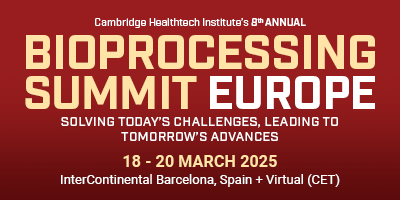
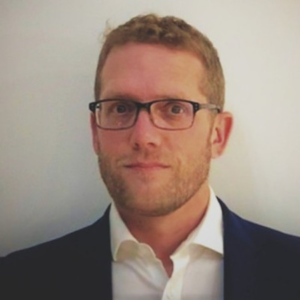
 Talk Title to be Announced
Talk Title to be Announced












